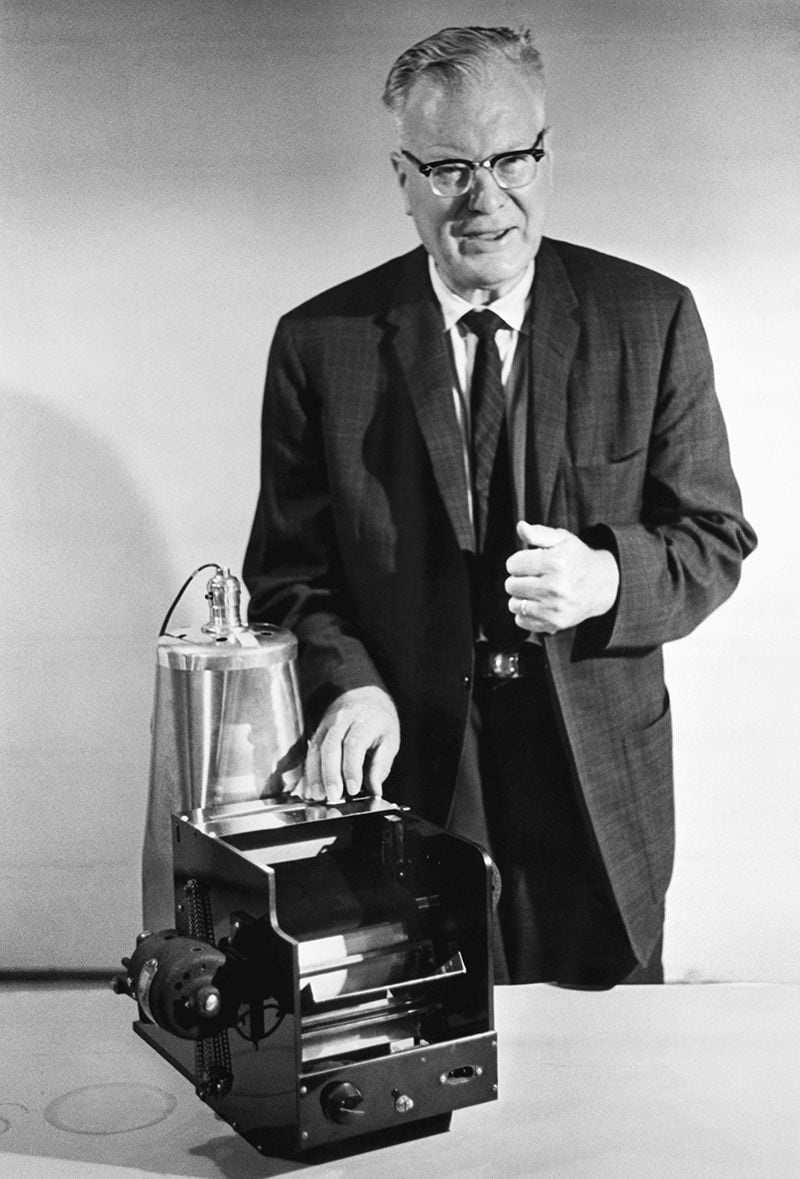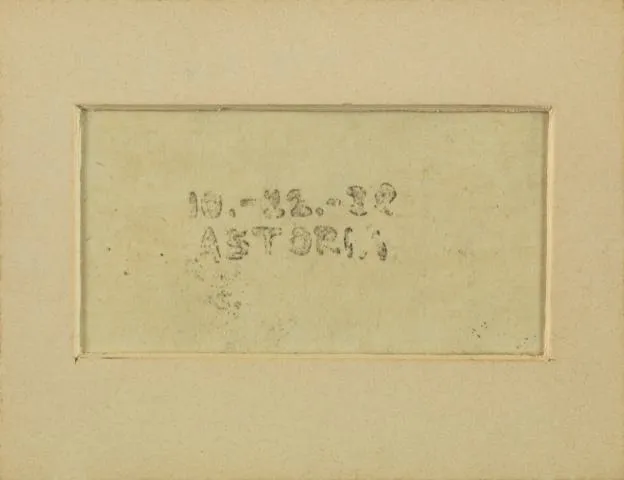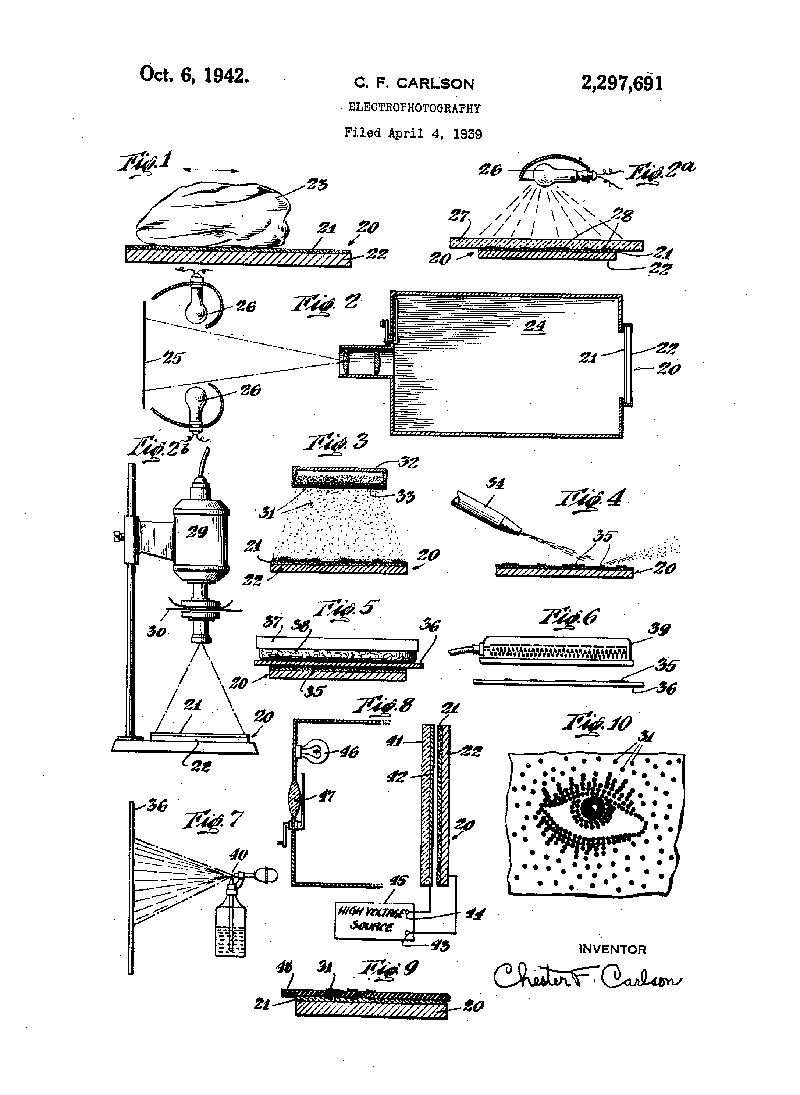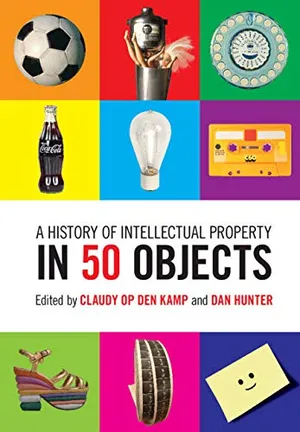How Xerox’s Intellectual Property Prevented Anyone From Copying Its Copiers
The company used patents and trademarks to develop a line of machines based on inventor Chester Carlson’s ‘electrophotography’
/https://tf-cmsv2-smithsonianmag-media.s3.amazonaws.com/filer/c0/35/c03567f5-4638-471f-b4d4-3ba596bf5e3d/xerox_914.jpg)
The story of the invention of the photocopy machine—or the “Xerox machine” as many call it—dramatizes both cherished and contested features of intellectual property. It dramatizes the myth of the lone inventor, here Chester Carlson, born poor and disadvantaged, who made his fortune from the invention but not before toiling in a patent office and in his own start-up for decades. But the development of the Xerox machine is also the story of collaboration and teamwork, which is essential to most innovation with social impact. The origin of the Xerox machine demonstrates how need, a passion for puzzles, and the creative spirit motivate everyday inventors. And its success in the marketplace implicates the role of business leverage and profit in productive creativity and innovation. The story is about rivals and claims of stealing ideas as well as about inevitable influence and borrowing, both which structure and inform incremental and ground-breaking invention. And if these tensions aren’t enough, the intellectual property that protected the Xerox machine forbids copying and yet the Xerox machine is used to make copies. While the Xerox machine is a tool for making exact copies, it often facilitates transformative creativity from innumerable writers, artists and musicians. The story of the Xerox machine is a microcosm of debates surrounding the proper purpose and scope of intellectual property and an object lesson in how irreconcilable dualities inform the everyday practice of intellectual property.
Chester (“Chet”) Floyd Carlson was born in Seattle, Washington in February 1906 into a family struggling with illness and poverty. Until he left for college, Chet looked after his parents both physically and financially. In high school, he fell in love with science. An early gift of a typewriter from his aunt and later, the hand-cramping he experienced from verbatim copying of science and law books while taking night classes to advance his career prospects, made him dream of a device that could swiftly produce and copy text. In college, Chet studied physics and chemistry, as well as law, eventually moving to New York to work in the patent department of P.R. Mallory & Co., a manufacturer of electrical components. It was while working by day in that patent department and by night in his home laboratory in Astoria, Queens, when he invented the copying machine. As he describes it: “with the problem so sharply defined, the solution came almost as an intuitive flash.”

And yet, the Xerox machine was not invented by one person alone. Although the idea of the copy machine arguably originates with Chet, he did not succeed with his experimentation and prototypes until partnering in 1938 with Otto Kornei, a young German physicist. Together, on October 22, 1938, they made the first xerographic copy on a piece of wax paper, which today is displayed in the Smithsonian’s National Museum of American History. And in 1945, Chet partnered with Battelle Memorial Institute (a private nonprofit research company) to shepherd and develop his invention on which he had already filed several patents. In 1948, the first public demonstration of xerography was given jointly by Battelle, the Optical Society of America and the Haloid Company (a Rochester, New York-based photo-paper company that would later become Xerox). The term “xerography” was coined by a classic professor consulting for Haloid—it derives from the Greek xero (dry) and graph (write). In 1950, Haloid began selling xerographic equipment and in 1952, Haloid trademarked the term “Xerox” for its line of copying machines. Reducing the invention to practice and bringing it to the public for productive, efficient and wide-spread use and sale was a team effort.
Chet retired in Rochester a comfortably wealthy man because of the patent royalties he shared with Battelle and Haloid and the stock he owned in Haloid. The patent that brought him the most money covered an invention in the 914-model machine, released in 1959, the success of which was due largely to its user-friendly design and its low operating costs (it did not require special paper). Further, Haloid’s business model was based on renting the machines, making the machine affordable for most businesses and thus facilitating its wide distribution. The 914 took off and Chet retired shortly thereafter. He described his financial success as satisfying, but not nearly as rewarding as seeing his initial dream of developing a working and usable copy machine to solve everyday problems brought to fruition and the public. From his early days working in an office, to his struggles with hand-cramps as a student, and his later trials with prototypes that failed, the actualization of the affordable desktop copy machine was a dream come true.
“The need for a quick, satisfactory copying machine that could be used right in the office seemed apparent […]—there seemed such a crying need for it—such a desirable thing if it could be obtained. So I set out to think of how one could be made.”

Chet was addressing a real need in the world, playing with physical, chemical and manufacturing puzzles and driven by a passion for science, engineering and the desire to design useful products for ordinary tasks. Motivated intrinsically, Chet was also rewarded with substantial financial wealth for his copy-machine inventions because of the collaboration and financial support of Battelle and Haloid, which were essential to bringing the 914 to offices around the world. Although the patent reward and the wealth it may bring inventors is often considered the principal incentive for innovation, Chet’s story and the development of the xerography machine as a ground-breaking invention for everyday use tells a more complicated tale about internal drive, personal commitments and collaborative enterprises.
A History of Intellectual Property in 50 Objects
What do the Mona Lisa, the light bulb, and a Lego brick have in common? The answer - intellectual property (IP) - may be surprising. In this lustrous collection, Claudy Op den Kamp and Dan Hunter have brought together a group of contributors - drawn from around the globe in fields including law, history, sociology, science and technology, media, and even horticulture - to tell a history of IP in 50 objects.
Remember Otto Kornei, who worked with Chet in 1938 in his Astoria “laboratory” (a space that was really Chet’s mother-in-law’s apartment)? Kornei left shortly after helping build the successful prototype to work at IBM. Thirty years later, IBM introduced a competitor xerographic office copier and Haloid (now called Xerox) sued IBM on April 21, 1970 for patent infringement. Xerox eventually won this lawsuit, but it dragged on for years, in part “because the invention of xerography had made it possible for lawyers to turn pretrial discovery into an open-ended orgy of photocopying.” One of the other ironies of the lawsuit was that Chet himself borrowed and developed ideas from previous inventors, such as the Hungarian physicist Paul Selenyi, from whose research papers Chet drew substantial information and inspiration, and who himself competes for the title of “father of xerography.” Origins of ideas cannot be traced to a single person or moment, and yet Chet’s patents, licensed to Xerox, named him the inventor and not Kornei as a joint-inventor or Selenyi as the grandfather of the original idea. Intellectual property is a grant of title in an invention or creative expression to one person or a group of persons, despite the inevitable reality that all innovation and creativity is iterative and borrows from what came before.

Chet licensed his patents to Battelle and Haloid, which leveraged the time-limited patent exclusivity to prevent competitors (such as IBM) from making close copies of the copy-machine and from diminishing its market dominance. For decades, the patents and Xerox’s related market dominance prevented competitors from building machines similar to the Xerox machine, which competition would have reduced the price of the machines and provided consumers with more choices. Not until the patents expired did we see effective competitors. To be sure, Chet, Battelle, and Haloid benefited from the patent protection, but whether the decades of lost competition was essential to the progress of science and the useful arts as intellectual property is intended remains an important question.
It is ironic that the original copy-machine that could not be copied was built to make copies—copies of texts, photographs, and even instructions for making or using copying machines. And for this reason, although Xerox closely protected its patents from infringement by competitors, the patented technology facilitated infringement of other intellectual property, such as copyrights. It took the 1984 Supreme Court decision Sony Corporation of America v. Universal City Studios concerning the legality of the video-cassette recording (VCR) machine to clarify that the makers of the copy-machines such as the Xerox, as well as of other “staple articles of commerce” such as cameras, typewriters, and audio recorders, were not liable for their contribution to copyright infringement stemming from the use of the copy-facilitating invention. But today, still, users of these machines remain liable for intellectual property infringement depending on the nature of their use of the copies made. In other words, copy-shops and their customers may be copyright infringers, but Chet’s copying invention that could not be copied (until the patent expired) remains immune from liability for the copying it facilitates. The distinction between users and device manufacturers still frame conflicts between stakeholders, such as between the Recording Industry Association of America and music audiences (including downloaders), or the Motion Picture Association of America and movie audiences (including those who share, stream and record video files). All means of recording, storing, and streaming copyrighted work, from MP3 players to peer-to-peer file sharing networks, have roots in copying devices such as the Xerox machine and the conflicts over their design.
Chet’s original conception of the copy-machine was to assist with business, education and research. He imagined verbatim copying for productive uses. Quickly, however, the copy-machine was put to all sorts of uses, many verbatim and productive, some frivolous, and countless transformative and new. In 1967, John Brooks wrote in The New Yorker that “one rather odd use of xerography insures that brides get the wedding presents they want” now that stores with bridal registries are equipped with Xerox copiers and lists can be made, remade and distributed with ease. Photocopying was also a tool for art. Place objects on the plate glass and you don’t know what will come out, but surely something provocative and fun. As Pati Hill, an artist who used photocopiers as paint and brush, said: “When I show [the copier] a hair curler it hands me back a space ship, and when I show it the inside of a straw hat it describes the eerie joys of a descent into a volcano.” In addition to quotidian and high art, the photocopier facilitated justice. Famously, Daniel Ellsberg used a copier to reproduce the Pentagon Papers. And grass-roots organizations like ACT-UP gained traction because they could plaster their fliers (made at the day jobs of the organizers) all over the streets of New York City. Where would leafleting and political organizing be today, to say nothing of do-it-yourself publishing and the possibilities of self-expression, without copy-technology? Marshall McLuhan wrote in 1966: “Xerography is bringing a reign of terror into the world of publishing, because it means that every reader can be both author and publisher.” And that is a good thing. Patented copy-technology birthed the explosion of copying for everyone. And copying, far from producing copy-cats, transformed the world.
The intellectual property history of xerography demonstrates that copying, which intellectual property rights prevent, is better promoted than prevented. It is a story about how intellectual property’s contested boundaries are and should be flexible given the contrasts that animate its realities. And it is a story about how problems, puzzles, collaborations and change promote innovation and creativity.
From the new book: A HISTORY OF INTELLECTUAL PROPERTY IN 50 OBJECTS edited by Claudy Op den Kamp and Dan Hunter. Published by arrangement with Cambridge University Press. Copyright © 2019 Cambridge University Press.
A Note to our Readers
Smithsonian magazine participates in affiliate link advertising programs. If you purchase an item through these links, we receive a commission.


